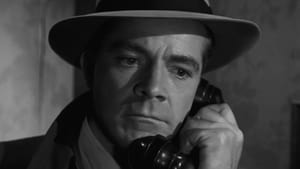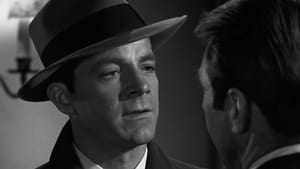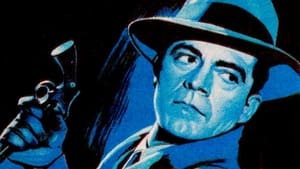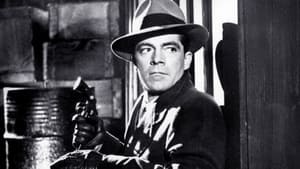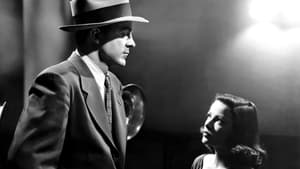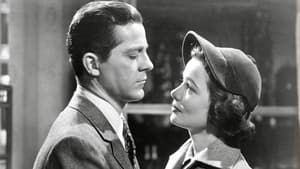Contact: [email protected]
Video Sources 0 Views

Synopsis
[ez-toc]




Introduction
In the ever-evolving landscape of cinema, the journey of old movies from black-and-white relics to vibrant colorized wonders is a testament to the dedication of film preservationists. One such gem that has undergone this transformative process is the 1950 film “Where the Sidewalk Ends Colorized.” Directed by the iconic Otto Preminger, this noir masterpiece has recently been reintroduced to audiences in a colorized version, adding a new layer of visual richness to its narrative tapestry.
This article delves into the significance of Where the Sidewalk Ends Colorized in the film noir genre, exploring the genius of Otto Preminger and the magnetic performances of Dana Andrews and Gene Tierney. We’ll also embark on a visual journey through the colorized version, examining the controversial yet fascinating process of bringing an old classic into the world of color. As we navigate through the streets of noir New York City, we’ll unravel the intricacies of the colorization debate, comparing the colorized rendition with its original black-and-white counterpart. Finally, we’ll ponder the lasting legacy of Where the Sidewalk Ends Colorized, celebrating its place in film history and the importance of preserving such cinematic treasures.
Read Media File Transfer Agreement: Terms and Conditions
Read FAQ
The Significance of Where the Sidewalk Ends Colorized in Film Noir
To understand the impact of Where the Sidewalk Ends Colorized, one must first grasp the essence of the film noir genre. Emerging in the post-World War II era, film noir is characterized by its dark themes, intricate plots, and a visual style that plays with shadows and light. Otto Preminger, a luminary in the noir movement, brought his unique touch to the genre, crafting films that continue to stand the test of time. Where the Sidewalk Ends is no exception, embodying the grit and tension synonymous with classic film noir.
Unveiling Where the Sidewalk Ends Colorized: From Plot to Production
The narrative brilliance of Where the Sidewalk Ends Colorized lies in its gripping storyline penned by the legendary Ben Hecht. The film follows Detective Mark Dixon, portrayed by the charismatic Dana Andrews, as he becomes entangled in a web of crime and deception. Gene Tierney, with her enchanting presence, adds depth to the narrative as the love interest, creating a magnetic on-screen chemistry that elevates the film.
As we explore the journey from script to screen, the meticulous direction of Otto Preminger and the collaborative efforts of the cast and crew come into focus. Ben Hecht’s script, with its sharp dialogue and noir sensibilities, sets the stage for a cinematic experience that transcends its time.
The Visual Aesthetics of a Colorized Classic
New York City, with its towering skyscrapers and dimly lit alleyways, serves as the perfect backdrop for Where the Sidewalk Ends Colorized. The decision to colorize this noir gem adds a layer of vibrancy to the cityscape, breathing life into the film’s visual aesthetics. The performances of supporting actors such as Karl Malden and Craig Stevens further enrich the tapestry of the film, contributing to its immersive atmosphere.
The colorization process, though met with skepticism in some quarters, introduces a new dimension to the viewer’s experience. The once monochromatic streets now burst with color, offering a fresh perspective on the classic tale of crime and redemption.
Examining the Controversy: Colorization in Film Restoration
The colorization of black-and-white films has been a topic of debate since its inception. Understanding the nuances of the colorization process, its benefits, and potential drawbacks is crucial in assessing its impact on Where the Sidewalk Ends Colorized. From the early techniques of hand-coloring to modern digital processes, the evolution of colorization reflects advancements in technology and artistic interpretation.
Exploring the controversies surrounding colorization, particularly in the realm of classic cinema, sheds light on the delicate balance between preserving the integrity of the original work and introducing it to a contemporary audience. The debate becomes even more intriguing when we consider the noir genre, known for its stark contrasts and chiaroscuro lighting, elements that define its visual identity.
The Transformation Unveiled: Where the Sidewalk Ends Colorized vs. Original
Comparing the colorized version of Where the Sidewalk Ends Colorized with its original counterpart unveils a fascinating transformation. Scenes that once relied on shadow and contrast now embrace a spectrum of hues, reshaping the mood and atmosphere of the film. As we delve into specific moments, it becomes evident that colorization, when executed with precision, can enhance the emotional resonance of a classic.
However, the debate over the faithfulness to the original artistic vision looms large. Purists may argue that the black-and-white version encapsulates the intended noir atmosphere more authentically, while others appreciate the newfound vibrancy brought by colorization. This exploration serves as a lens through which viewers can appreciate the creative decisions involved in revitalizing an old classic.
Preserving Film History: The Legacy of Where the Sidewalk Ends Colorized
As we reflect on Where the Sidewalk Ends, it becomes apparent that this film holds a special place not only in the noir canon but also in the broader scope of cinema history. Otto Preminger’s directorial prowess, combined with the stellar performances of the cast, cements the film as a timeless masterpiece. The colorized version, controversial as it may be, extends the film’s reach to new audiences, ensuring that its legacy endures for generations to come.
Film preservation emerges as a central theme, emphasizing the responsibility to safeguard and celebrate old movies like Where the Sidewalk Ends. These cinematic treasures provide a window into the past, offering insights into the cultural and artistic landscape of their time. The enduring allure of film noir, coupled with the advancements in restoration technology, underscores the importance of cherishing these glimpses into bygone eras.
Conclusion
In the final act of our exploration, we invite readers to embark on their own journey through Where the Sidewalk Ends, whether in its original black-and-white form or the daringly colorized rendition. Both versions offer a unique lens through which to appreciate the artistry of Otto Preminger and the timeless allure of film noir.
As we celebrate the marriage of old and new, it’s crucial to acknowledge the delicate balance required in the process of colorization. When undertaken with respect for the filmmaker’s vision and a meticulous approach to preserving the essence of the original, colorization can breathe new life into classic cinema.
Where the Sidewalk Ends stands as a testament to the enduring power of storytelling and the magic of cinema. Let us not only revel in its gripping narrative and visual splendor but also recognize the broader significance of preserving our cinematic heritage. In doing so, we ensure that the sidewalks of film history stretch far into the future, inviting new generations to explore the rich tapestry of our collective cinematic past.
